VMware CEO Raghu Raghuram Unveils New Versions Of vSphere, vSAN
‘vSphere 8 and vSAN 8 took two years to build. It’s a momentous new version. And it sets the foundation for the next decade of modern computing,’ VMware CEO Raghu Raghuram tells attendees at VMware Explore.
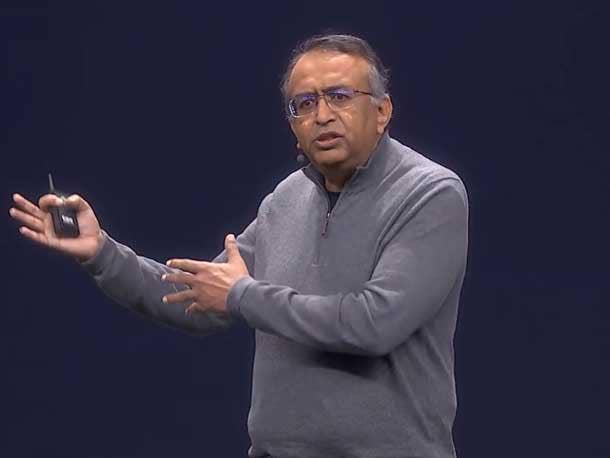
VMware CEO Raghu Raghuram used his keynote address at VMware Explore to give credit to partners and unveil new products and updates.
VMware Explore, formerly VMworld, gave the company a chance to unveil major updates to its flagship compute and storage products with the debut of vSphere 8 and vSAN 8, as well a new multi-cloud management offering called Aria. The company also announced expansions to its partnerships with Amazon Web Services, IBM, Microsoft and NetApp.
[RELATED: VMWARE PRESIDENT SUMIT DHAWAN TAKES ON BROADCOM DEAL, R&D AND PARTNER QUESTIONS]
What Happened At VMware Explore?
The conference comes as Palo Alto, Calif.-based VMware expects to be acquired by semiconductor company Broadcom. During a conference with reporters and analysts, Raghuram said the the acquisition is “on track,” with VMware employees working with Broadcom on understanding the product portfolio and looking at how to benefit from VMware’s channel partners.
The acquisition should close during Broadcom’s 2023 fiscal year, which runs November to October 2023.
“We’ve got a lot of work to do every day taking care of our customers, building and shipping great products,” he told reporters and analysts Tuesday. “Obviously, the channel is a huge, huge part of what we do. And they [Broadcom] are super excited about using that channel in the ways that we are doing today and growing from there.”
The acquisition has not eaten into VMware’s business, as evidenced by the company’s quarterly earnings reported earlier this month. VMware reported overall revenue for the second quarter of $3.34 billion, up 6 percent year over year.
Here’s what Raghuram had to say during his keynote address.
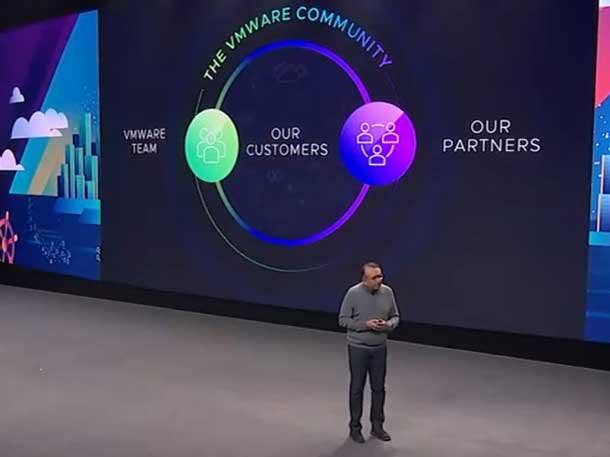
5 Million Developers, 35 New Apps A Minute
There are over 5 million developers in our community. Five million. If you had asked me 10 years ago, I would have said, ‘No way.’
These 5 million developers, especially on the Spring platform alone, are starting 350,000 new projects every week—350,000 new digital projects every week. That’s 35 new apps every minute. That’s astounding.
Even while all this massive transformation is underway, you’ve got 85 million new workloads that are running globally, running your business.
So together, this community is a community that is running all of our businesses today and taking us to this digital future.
Vmware ‘30,000 Partners Strong’
The third leg of this community besides you [customers] and VMware is, of course, our partners.
From day one, VMware has of course solved your customers’ problems with the help of partners—30,000 partners strong, many of whom are on the expo floor this week. … Together, we are a force to be reckoned with.
When we started VMworld, it was a community for data center professionals. And we grew that community.
But over the years, we have broadened it. It’s no longer just about the data center. It’s about all of these roles that I just talked about. Not only in the data center, but across clouds and the edge. It is truly a multi-cloud community these days.
That is why we changed this event from VMworld to VMware Explore. VMware Explore, from now and going forward, is the event for the multi-cloud community. You come here not just to learn about VMware’s products and services, but about all of the great developments that are happening in the multi-cloud universe. This is the gathering of the center of the multi-cloud universe.
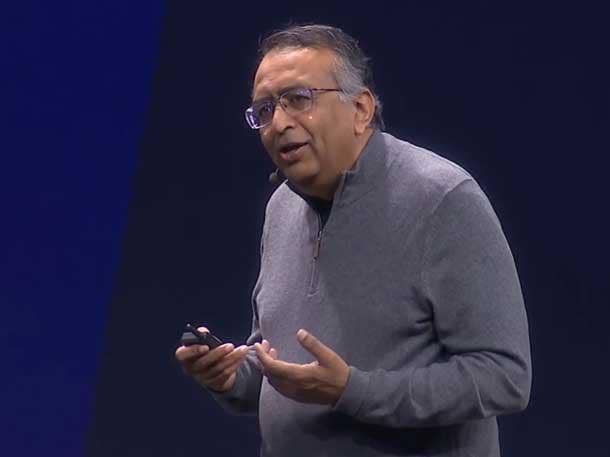
The Great Replatforming
Now, let’s talk about what’s happening in your organizations. Whether you’re a born-in-the-cloud company or an established enterprise, all of you are running the same race.
And that is the race to transform your businesses to become digitally smart. You’re driving the acceleration of innovation velocity. That is a key priority. You’re driving the next generation of automation using machine learning. That’s a great priority. And you’re driving the next great leap in employee productivity. This is what digitally smart means. This is what set off the cloud journey now more than a decade ago.
And the first step of the cloud journey, of course, was transforming the front-office experience, delivering the next generation of mobile applications.
That was a fantastic success. And that led to CIOs and CEOs thinking about replatforming everything in the enterprise. Not just the front office, but the mid office, the back office, all the processes, you name it. I call this ‘the great replatforming.’
But when I talk to CEOs, here is what I hear back. What I hear back is that we are not moving fast enough. And the roadblocks tend to be very common regardless of industry. Let me mention just three roadblocks.
The first one is a lack of skills. Not just developer skills, but cloud skills, SRE skills, platform skills, you name it. The second is the weight of all the enterprise applications that you’ve got to bring forward with you.
And the third—because all of your teams are building applications on multiple clouds in the data center following different models—there is no consistent developer experience. That slows them down. There is a fragmented operations model. That slows them down. There is a fragmented security model. That increases risk. All of these things are slowing down the great replatforming.
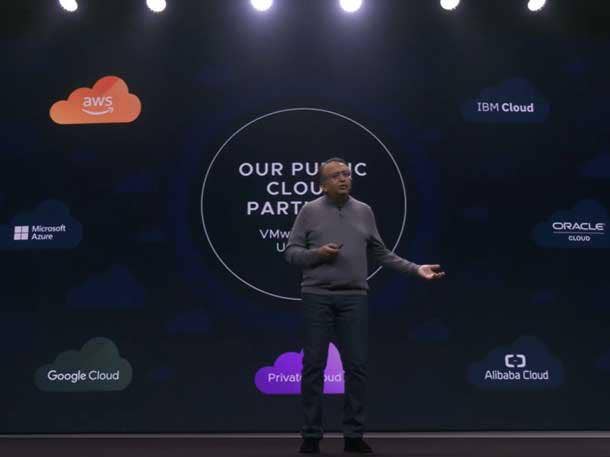
Cloud Chaos And Cloud Smart
We did a survey in the summer. Many of you characterize the state of your current deployment as ‘cloud chaos.’ That’s what you called it.
And while the growth of cloud has been phenomenal, it is not surprising that it’s only 10 percent of the overall spend of IT. Because of all the things that we just talked about.
But here’s good news. We can fix this. And we can change this picture. In fact, many companies are starting to figure out a better approach. This better approach is called ‘cloud smart.’ … Let me tell you what cloud smart means.
Fundamentally, cloud smart means taking an architected and planned approach to digital transformation on multi-cloud. Simply put, here are some of the core principles of cloud smart.
First is, deploy the right cloud for the right application based on past technical factors, governance factors, data access factors, and so on and so forth.
Second, invest in a unified developer experience regardless of where you’re building applications. Because the single most critical bottleneck to you going faster is developer productivity.
If you want to accelerate the path to production … solving the developer experience becomes an important aspect of cloud smart.
Secondly, all these enterprise applications need to run on a consistent infrastructure that has the resiliency, the security and the cost-effectiveness and the same operational model, regardless of where you want to run it—in the data center, in the edge, in the clouds of your choice.
And thirdly, your employees are going to be using a variety of applications. Your traditional application, still in the data center. SaaS applications. New cloud-native applications.
You have to remove the friction in how you deliver a frictionless experience to your employees so that they can go achieve the next great leap in productivity. These are the elements of cloud smart.
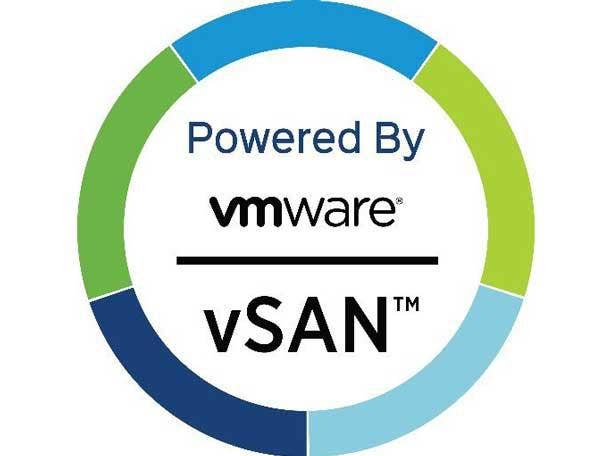
New vSphere, vSAN Releases
Last year, at this event, we announced our vision for a set of technology services and platforms that enable you to be cloud smart. We called it the VMware Cross-Cloud Services in five distinct areas.
If last year was about the vision, this year, I’m super pumped because we are delivering products. … The first of these is a big one, the next major release of vSphere and vSAN. vSphere 8 and vSAN 8.
Together with NSX [VMware’s network security virtualization platform]—vSphere, vSAN and NSX form the foundational building blocks of modern infrastructure available as software and as a service at any location of your choice.
vSphere 8 and vSAN 8 took two years to build. It’s a momentous new version. And it sets the foundation for the next decade of modern computing. The next decade of modern computing is going to be about what the industry analysts and technical folks call heterogeneous computing in a single server, in a single compute infrastructure.
You are going to have available to you a variety of processors—the CPU, the GPU, and an exciting new processor called the data processing unit. And vSphere is going to be the singular platform that allows you to deploy and manage workloads and run them effectively and securely regardless of what the underlying processor technology is.
And this is going to allow you to run not only today’s applications, but the next decade of AI and machine learning applications and data applications, real-time applications, telco applications, you name it. I’m super excited about vSphere 8 and vSAN 8.
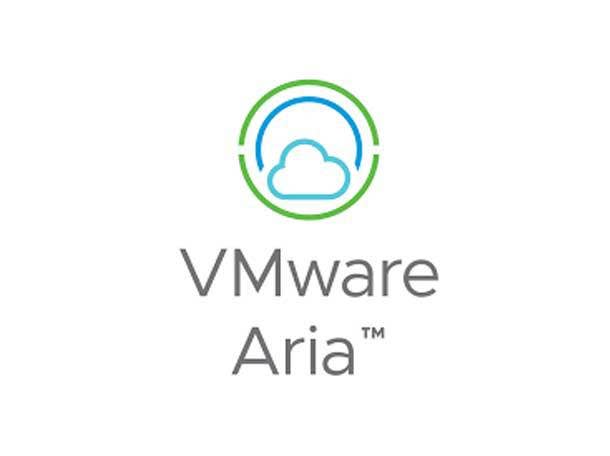
New VMware Aria Offering
Multi-cloud management is a huge problem today. At VMware, we build a lot of SaaS applications that are multi-cloud. And I see the builds every day and every month. We are spending millions of dollars building these new applications and managing them.
So we understand deeply the challenge of building applications on the cloud and managing them to a high SLA [service-level agreement], high resiliency, high level of security.
Coming out of our understanding of this problem is Aria, a brand new multi-cloud management solution from VMware.
Here is what makes Aria different and exciting. At the core of Aria is a concept called the Aria graph. Let me simplify it for you. So if you think about back when Google first came about, their genius was they created a graph of the web, all of those web links.
We have done something similar. We have created a graph of all of your cloud assets—your hundreds of thousands of vPCs [virtual personal computer] and Kubernetes clusters and serverless and on-prem and so on and so forth.
And using this graph, we can do all sorts of management … and automation that we could never think of before. That is VMware Aria. It is at the core of our multi-cloud management strategy. And it should be at the core of your multi-cloud management strategy.
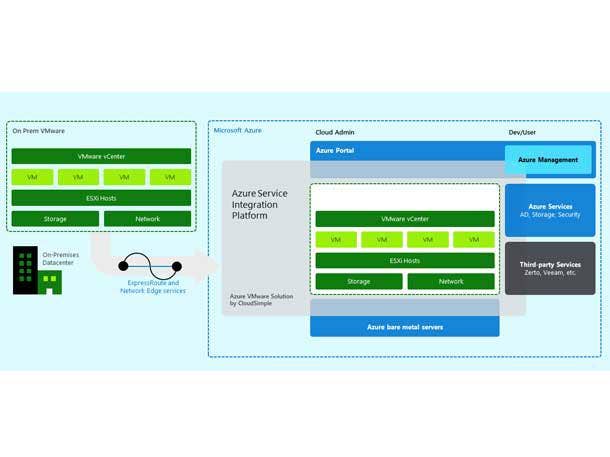
Expanded Microsoft Azure Integration
Clearly, as we invest and innovate around multi-cloud, at the heart of this multi-cloud world are our cloud partners. And I have personally spent hours and hours working with my peers on how to innovate to solve these problems on multi-cloud.
Last year, we introduced a new program and a new commercial model called Cloud Universal. And Cloud Universal is a single program and a single commercial model that allows you to consume cloud resources across all clouds.
Now, when we introduced it last year, we introduced it for the private cloud and VMware Cloud on AWS. So you all said, ‘Hey, that is great, but that is not multi-cloud.’
So we went back to work. Earlier this year, we added support for Google. And today, I’m excited to announce that Microsoft Azure VMware Solution will be part of VMware Cloud Universal.
Now think of this. You don’t have to predict or wonder when your developers want to build the next great application whose cloud services they want to connect it to, how to manage them, etc., etc.
One commercial model covers all of these. You can choose then to flexibly build your applications on-prem, move it to the cloud or build it on one cloud, run it on another cloud. Go crazy. All of it is covered by one commercial model. Cloud Universal is the commercial model for cloud smart. And we are looking forward to all of you adopting our Cloud Universal program.
And over time, we are going to continue enhancing Cloud Universal to cover so many of our other cloud partners as well.

Partners Involved In Sustainability
Now, as proud as we are of enabling your economic advancement, all of us have a larger collective responsibility. When a big, big chunk of the global economy runs on your platforms, there’s a broader responsibility.
When we started vSphere, when we started ESX [VMware’s bare-metal hypervisor] in fact, one of the key value propositions was the savings in power consumption. The sustainability benefit of vSphere was one of the key reasons why you all adopted vSphere.
Now today, as we live in this multi-cloud world, nearly two decades later, the challenges of sustainability are, I would say, an order of magnitude more important and more relevant to all of us. So we introduced VMware Zero Carbon Committed Initiative. That’s a mouthful. ZCCI.
It is a commitment that all of the VMware software will be running on data centers powered by 100 percent renewable energy by 2030. And we are proud to say there are many, many, many partners that have joined us—service providers and hyperscalers. This is an example of the collective impact we can have as a community.